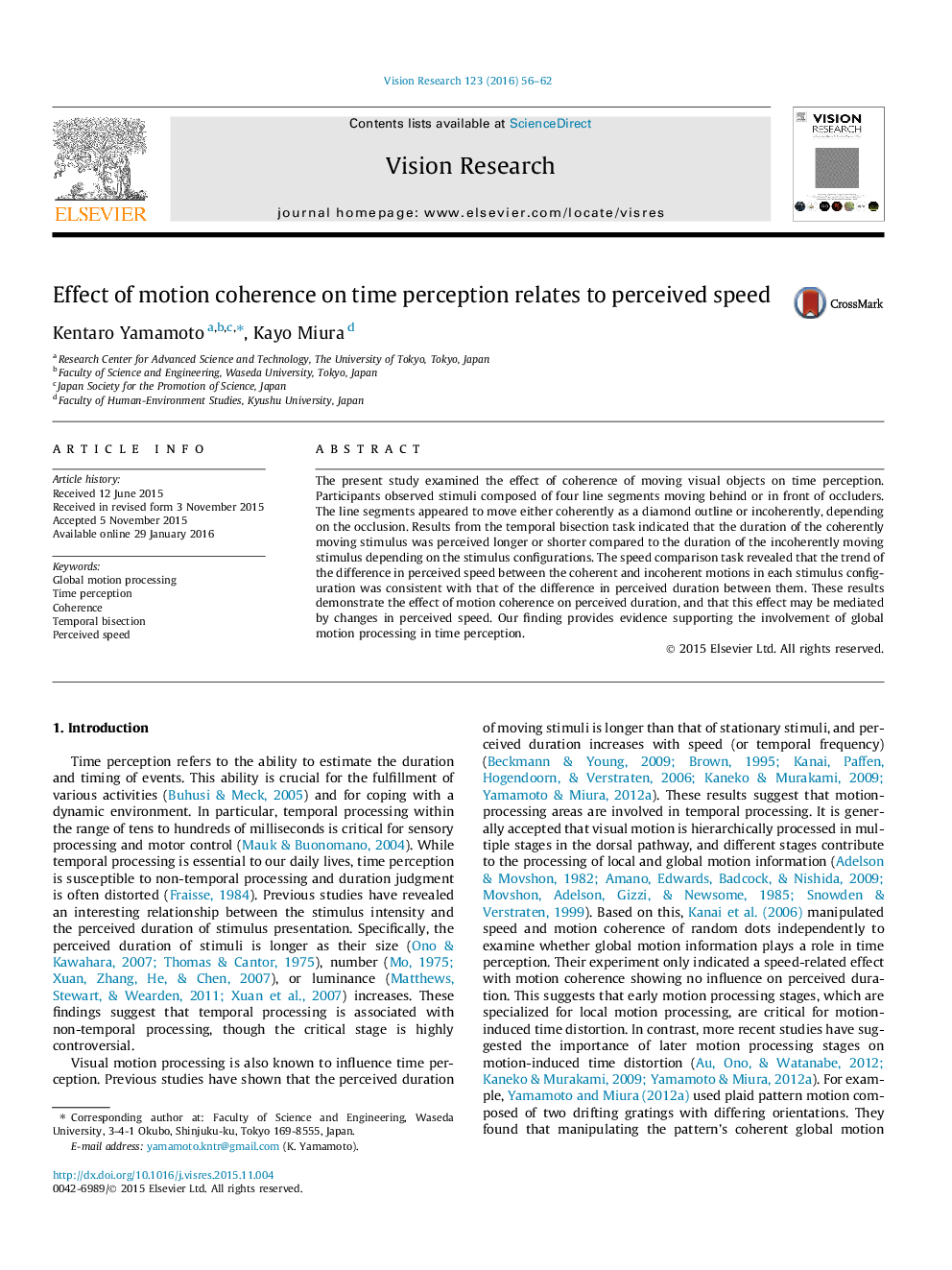| Article ID | Journal | Published Year | Pages | File Type |
|---|---|---|---|---|
| 6203019 | Vision Research | 2016 | 7 Pages |
â¢Motion coherence of spatially segregated objects influenced perceived duration.â¢The direction of the motion coherence effect varied depending on the stimulus used.â¢The difference in perceived speed correlated with the difference in perceived time.â¢The results suggest the involvement of global motion processing in time perception.
The present study examined the effect of coherence of moving visual objects on time perception. Participants observed stimuli composed of four line segments moving behind or in front of occluders. The line segments appeared to move either coherently as a diamond outline or incoherently, depending on the occlusion. Results from the temporal bisection task indicated that the duration of the coherently moving stimulus was perceived longer or shorter compared to the duration of the incoherently moving stimulus depending on the stimulus configurations. The speed comparison task revealed that the trend of the difference in perceived speed between the coherent and incoherent motions in each stimulus configuration was consistent with that of the difference in perceived duration between them. These results demonstrate the effect of motion coherence on perceived duration, and that this effect may be mediated by changes in perceived speed. Our finding provides evidence supporting the involvement of global motion processing in time perception.
